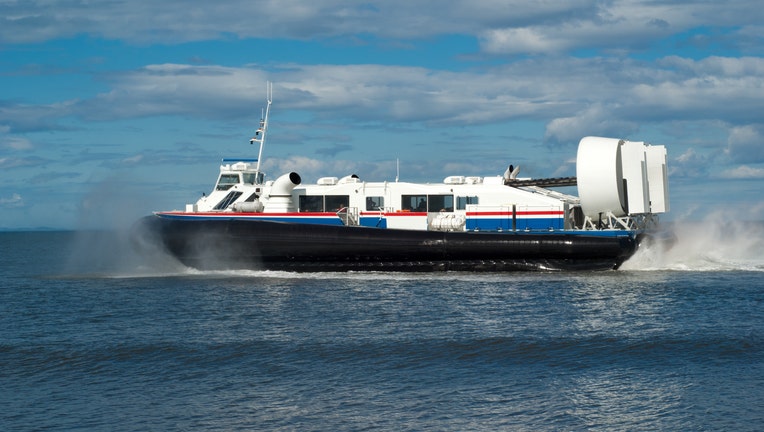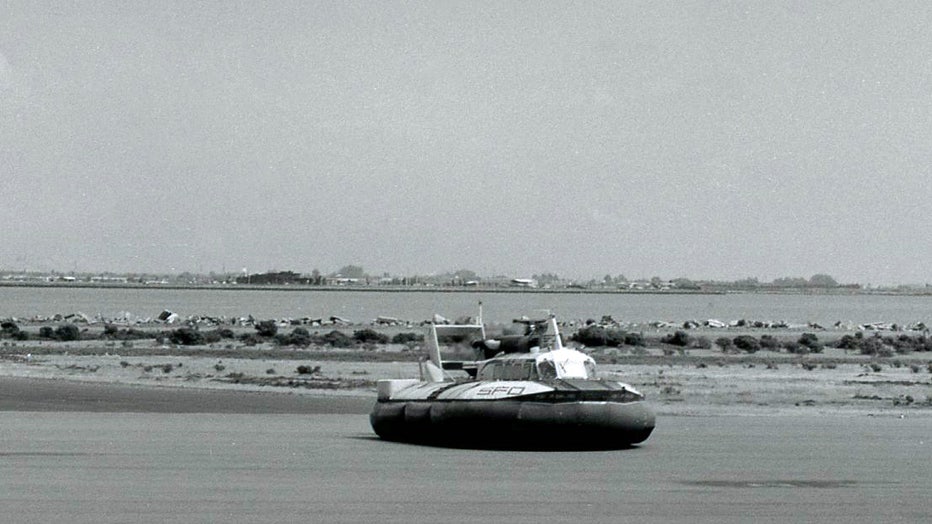Water Emergency Transportation Authority exploring feasibility of hovercraft routes on bay

SAN FRANCISCO BAY AREA - A study on the feasibility of using hovercraft for public transit to otherwise inaccessible points on San Francisco Bay will be presented when the Water Emergency Transportation Authority board meets on Thursday.
The attraction of hovercraft, unlike the catamarans now in use, is their ability to navigate shallow areas, which could open the possibility of new routes from the East Bay reaching major employment centers, notably high-tech campuses, that have opened south of San Francisco.
"Bay depth has been a driving factor for interest in hovercraft; much of the San Francisco Bay is shallow, especially the southern areas, and normal high-speed, high-capacity catamarans cannot safely operate in shallow waters," said Thomas Hall, public information and marketing manager for WETA.
Hovercraft float over the water on a cushion of air and can also operate on land.
The new study is an update of one done for WETA in 2011, when the board decided not to pursue the option.

The use of hovercraft on the Bay dates back to the mid-1960s, when San Francisco Helicopter Airlines operated service between Oakland and San Francisco before it was abandoned as too expensive.
Compared to conventional catamarans, hovercraft are expensive to buy and maintain, have a much lower passenger capacity, and generate more pollution and considerably more noise.
But newer models are more fuel efficient and less noisy than their counterparts were when the WETA study was done nine years ago, and the prospect of adding service to harder to reach areas prompted the new study.
Using hovercraft would avoid the need for dredging to create channels deep enough for catamarans, which is not only expensive and time-consuming process, but also has the likelihood of significant environmental issues.
Among the most promising hovercraft routes, according to the study, are Richmond to South San Francisco, Alameda to West Dumbarton, and San Leandro to South San Francisco.
Even if service is found to be feasible, there are other issues that would need to be overcome, including funding sources and environmental impact reports for selected routes.
The board meets at 1:30 p.m. Thursday via video conference.

